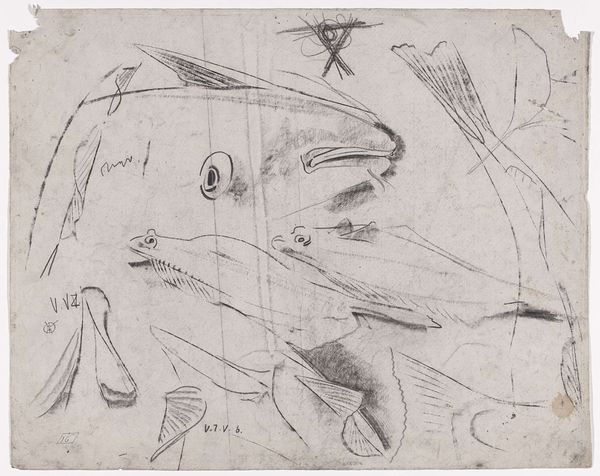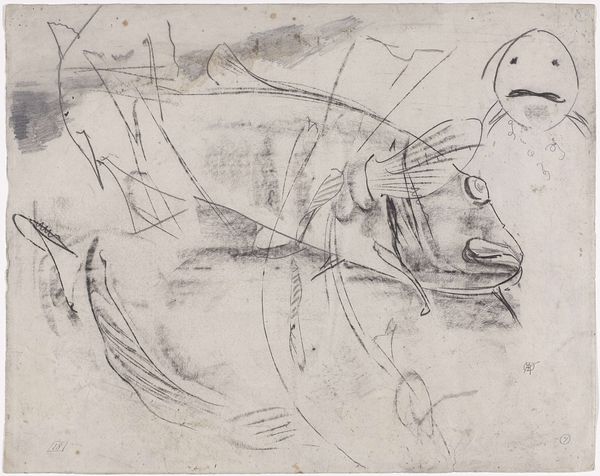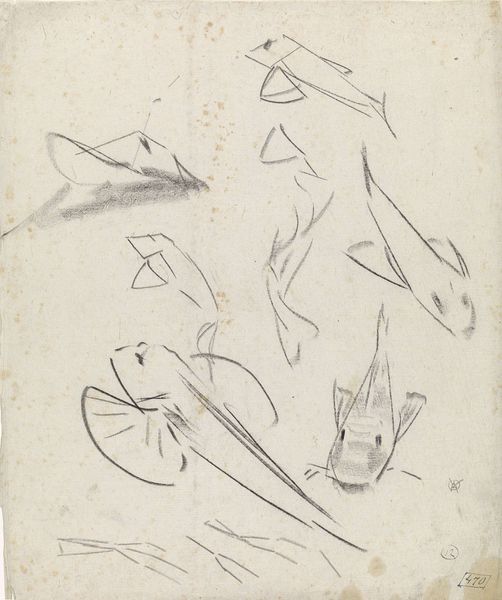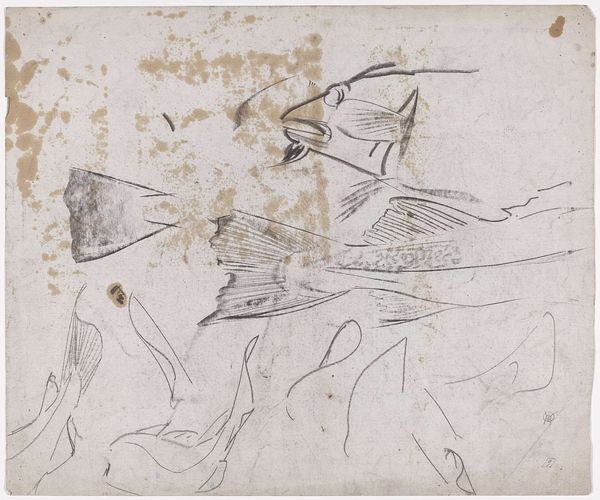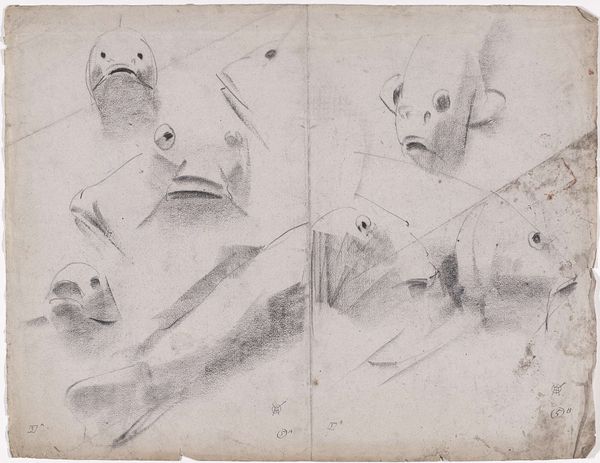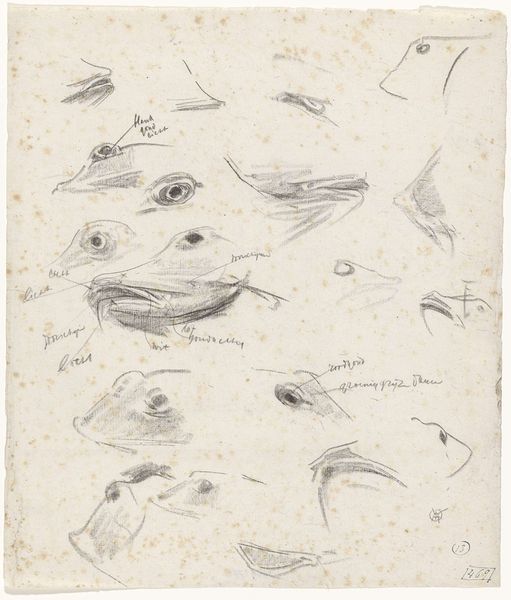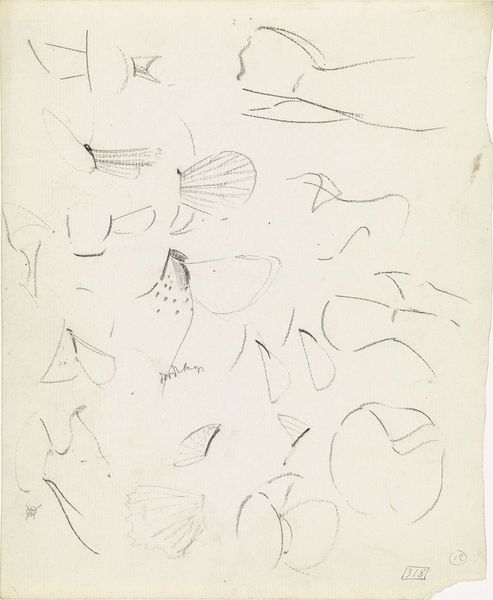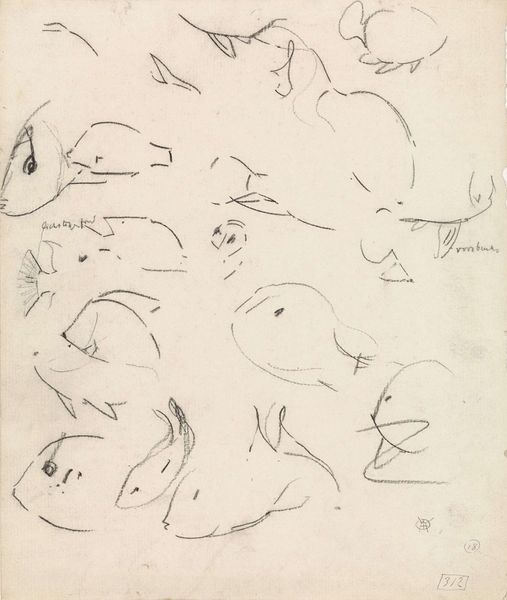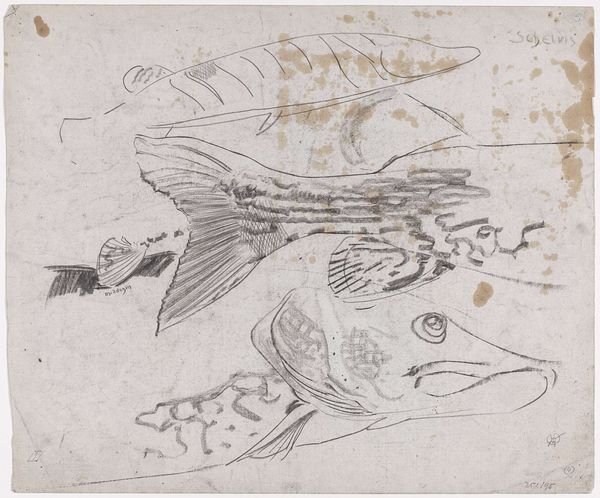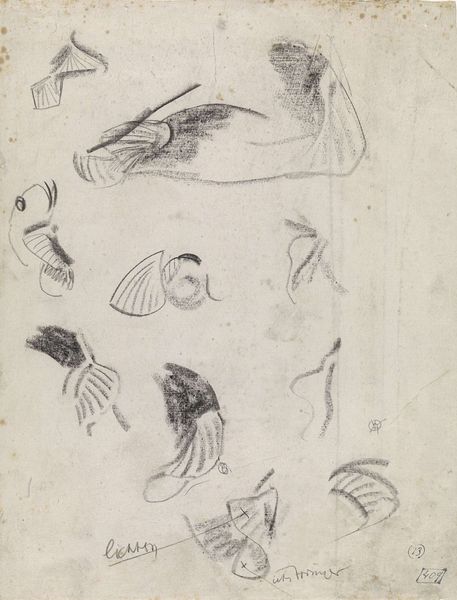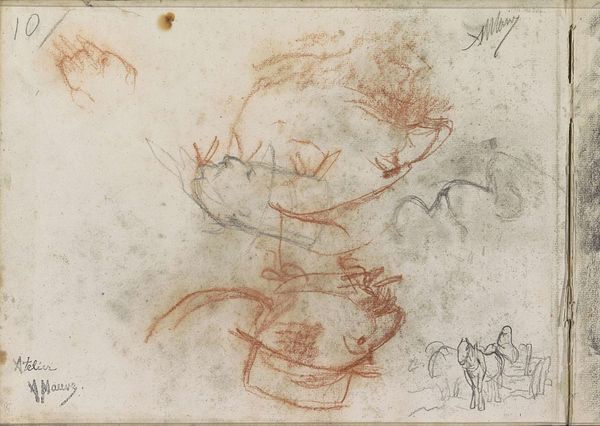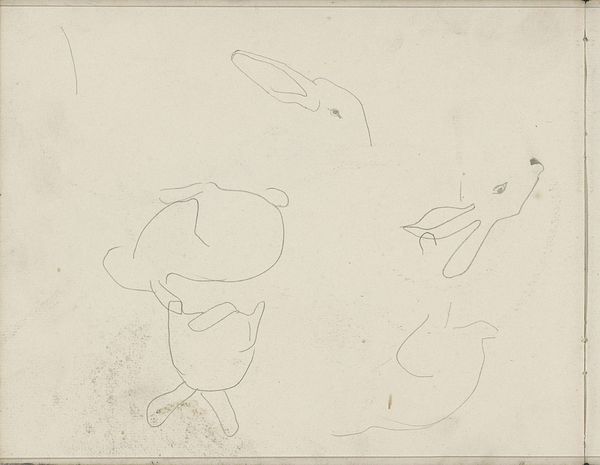
Schetsblad met verschillende vissen, studies van vinnen en staarten 1876 - 1924
0:00
0:00
drawing, paper, ink, pencil
#
drawing
#
quirky sketch
#
incomplete sketchy
#
paper
#
personal sketchbook
#
ink
#
idea generation sketch
#
sketchwork
#
ink drawing experimentation
#
geometric
#
pencil
#
sketchbook drawing
#
storyboard and sketchbook work
#
sketchbook art
#
realism
#
initial sketch
Dimensions: height 415 mm, width 525 mm
Copyright: Rijks Museum: Open Domain
Curator: What immediately strikes me is the somewhat ethereal, ghostly quality of these aquatic forms. Editor: Indeed. We're looking at a study sheet, created between 1876 and 1924 by Gerrit Willem Dijsselhof, titled "Schetsblad met verschillende vissen, studies van vinnen en staarten," or "Sheet of sketches with different fish, studies of fins and tails." It's executed in pencil and ink on paper, now held at the Rijksmuseum. Curator: Dijsselhof's choice to depict fish, even in preparatory sketches, opens up a fascinating realm of symbolic interpretations. Fish have historically been tied to fertility, transformation, and the subconscious, representing the mysterious depths of the human psyche. Editor: Interesting. I see, particularly in the detailed rendering of the fins and tails, the visual language of movement, an attempt to capture not just form but the very essence of fluidity. What stands out for you on a more immediate, personal level? Curator: I am drawn to the asymmetry inherent in the arrangement, and the lack of commitment to completeness. There's something quietly defiant about the abandonment of typical conventions. It resists the expectation of polished representation and the artist's authority. It's as if the artist is willing to share their space of contemplation with the viewer, a privilege! Editor: I see it more as the raw documentation of an artistic investigation, perhaps less of a social statement. In the late 19th and early 20th centuries, there was a huge interest in the natural world. Dijsselhof could have simply sought to master the anatomy and motion of his aquatic subjects. Note, if you will, how some forms are meticulously shaded, others are merely outlined. Curator: Of course, there is no one singular reading. However, the interplay of finished and unfinished elements reflects, at least for me, the inherent contradictions and struggles within art production itself. It underscores a journey toward an uncertain destination rather than arrival. Editor: That tension certainly does animate the piece, no pun intended! For me, I suppose the symbolic meaning derives not so much from the fish themselves, but from this sense of unfinished potential – a feeling perhaps common to any artist wrestling with their craft. Thank you for shedding light on some socio-cultural layers present here. Curator: And thank you for your insights. It's this sort of visual record that, on one hand, reminds me about the potential for art to create more meaningful conversations; but also serves as a window into a pivotal time when individuals pushed against accepted conventions and allowed creativity to flourish within art making itself.
Comments
No comments
Be the first to comment and join the conversation on the ultimate creative platform.
